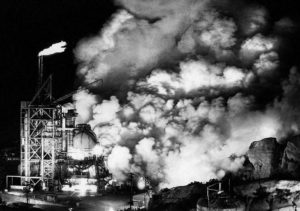
A comprehensive EnviroReporter.com analysis of the Department of Toxic Substances Control’s “white paper” on the Brandeis-Bardin Institute finds the document gravely flawed.
The DTSC paper, released May 2 and produced due to pressure from BBI’s owners according to recent media reports, said that the 2,878-acre Jewish camp was free of radiation and chemical contamination from the bordering, and uphill, Santa Susana Field Laboratory (SSFL). Abundant evidence to the contrary was exposed in EnviroReporter.com‘s Brandeis-Bardin’s Toxic Denial April 6, three weeks before the white paper was released.
DTSC’s white paper ignored three 2016 Department of Energy (DOE) and NASA studies that showed radioactive and chemical toxins at Brandeis-Bardin. Indeed, EnviroReporter.com only knew of of two of these studies because DTSC sent them along with many others on its list serve.
So numerous and serious were the faults of the DTSC report that EnviroReporter.com has produced a line by line analysis called 2017 DTSC Brandeis-Bardin ‘White Paper’ Analysis. The analysis helps connect the confusing DTSC dots and allows the reader to better understand this taxpayer-funded debacle designed to debunk decades of data that demonstrate the extent and severity of the contamination.
DTSC “utilized all available data in the last 25 years” said DTSC’s Mohsen Nazemi at a May 11 conference call for the press explaining the white paper. (Initially DTSC denied EnviroReporter.com access to the presser but even after it did relent, failed to answer any of this reporter’s questions.)
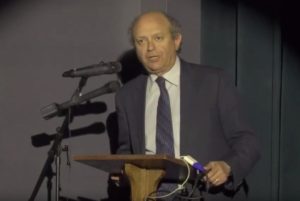
“I’ll suggest as a quick background,” Nazemi continued. “I think the issue of contamination may have been back in the ‘90s. In 1995, based on the early 1990 studies, the U.S. EPA determined that while radionuclides levels in some areas exceeded local background levels established at the time, they still did not pose a threat to human health or the environment and were below levels typically found throughout the United States. Then in 1997 Boeing purchased the area of the Brandeis-Bardin property with highest radionuclides and incorporated it in the Santa Susana Field Laboratory site and refer to it as the Northern Buffer Zone. Then US EPA in 2012 sampled those areas and confirmed that contamination from Santa Susana Field Lab is controlled at the Northern Buffer Zone and is not entering the Brandeis-Bardin property.”
Nearly nothing Nazemi said in this prelude to reporters’ questions was true. While carefully choosing his words, Nazemi later said that DTSC had looked at everything on BBI contamination. “[DTSC] looked at whole history of data that was available and did evaluation based on that data.”
But the white paper’s list of reports analyzed left out the most important recent data. Simply comparing the Brandeis-Bardin’s Toxic Denial reports page with DTSC’s thin Resources list illustrates the point.
READ THE ENVIROREPORTER.COM ANALYSES:
DTSC ignored the most obvious “available data” including a January 20, 2016 DOE report that the department had actually sent to EnviroReporter.com but did not include in its BBI white paper. That report showed a trio of BBI wells with Area IV nuclear fingerprints.
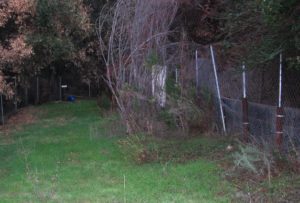
Also absent from the white paper was a November 2016 NASA report showing levels of fluoride in Brandeis-Bardin artesian well SP-29B that exceeded the California Maximum Contaminant Level (MCL) for it in drinking water. SP-29B’s 4.8 milligrams/liter is more than double the MCL for the chemical. A reading of 4.2 mg/L in the same well in the 1st Quarter of 2017 showed that the toxic level of fluoride in Brandeis-Bardin water increased over that period.
Nazemi claimed that “some areas exceeded local background levels established at the time, they still did not pose a threat to human health or the environment,” ignoring a 2016 DOE-AJU Summary Brandeis-Bardin Soils report showing numerous SSFL-related chemicals exceeding their background levels by multiple times.
Nazemi said that the US EPA had said that the Northern Buffer Zone effectively “controlled” radioactive and chemical goo, preventing it from entering BBI. But US EPA never said anything of the sort and indeed told DTSC quit making this false claim.
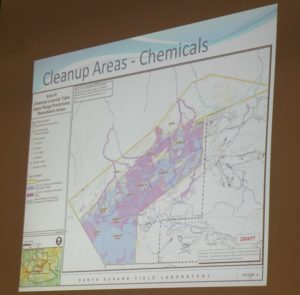
Nazemi towed DTSC’s party line again when the questioning began. “DTSC believes that the limited number of these very low level concentrations in the NBZ do not indicate a contamination migration pathway from SSFL source area into the NBZ. This information along with other multiple lines of evidence was evaluated that led to the DTSC’s conclusion that there was no migration of radionuclide contamination.”
This reporter was permitted just one question of Nazemi and was cut off while asking it. Why DTSC hadn’t included the two 2016 DOE reports and the 2016 NASA study in the BBI white paper was the gist of the query. “We are familiar with those reports and we have evaluated those reports but if you are getting into too many specifics about specific compounds then I really have to get back to you so we’ll be happy to have Rosanna communicate back with you about your specific question.”
EnviroReporter.com‘s question was never answered, which is a routine common to the controversial department throughout the last decade. Nazemi did inadvertently admit, however, that DTSC was aware of the missing reports confirming yet again that the white paper ignored the recent results of government agencies showing SSFL goo impacting the Jewish camp.
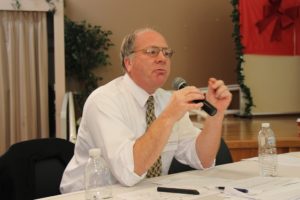
What was included was a “risk assessment” analysis for camp visitors and staff that allows vastly higher amounts of radiation and chemicals to be considered safe at BBI versus Area IV where DOE signed an agreement with DTSC to clean up any and all contamination to background levels. NASA has an identical Administrative Order on Consent with the state EPA’s toxic department to clean up its areas of SSFL activity.
Those areas of activity include offsite zones like BBI where contamination is clearly from SSFL. DTSC and DOE have repeatedly said that they would remediate to background any toxins found offsite which, of course, includes Brandeis-Bardin. DTSC’s white paper changes all that with its convoluted risk assessment. The results, though, are shocking.
One of the two most concerning radionuclides emanating off of Area IV is strontium-90. DTSC’s standard for the camp is 42 times higher than the required DOE cleanup level for strontium-90’s BTV for Area IV which will likely end up as a park eventually. Just three times background of any toxic substance, especially a bone and blood cancer-causing radioisotope like strontium-90, is major cause for concern. According to documentation obtained by EnviroReporter.com, the California Highway Patrol considers any radioactive material over three times background to be the triggering level for a hazardous materials incident requiring a full HazMat response.
“When DTSC does concede radiological contamination above background, it falsely claims it is below the Risk Based Screening Levels for residential exposure, when in fact the readings are above those levels,” said the Santa Susana Field Laboratory Work Group. “DTSC does this by misrepresenting the residential risk based levels by factors of thousands. It claims, for example, that the EPA residential preliminary remediation goal is about 4 picocuries per gram, when in fact it is 0.0036.”
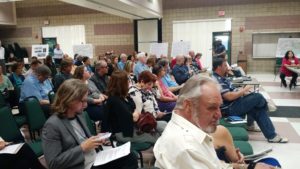
DTSC uses these weaker standards in the white paper to assert harmless levels of contamination at Brandeis-Bardin, going so far as to claim that all chemicals at BBI are at background. EnviroReporter.com exposed, and proved, that 21 Brandeis-Bardin soil samples exceeded their respective Area IV “background threshold values” (BTVs) for a slew of toxic substances.
The heavy metal antimony came in at triple background in the 2016 DOE report given to AJU which sent it to Jewish Journal that then published it unanalyzed. The polycyclic aromatic hydrocarbon (PAH) naphthalene, which has caused cancer in animals, topped out at 5.4 times its BTV. The PAHs fluorine and phenanthrene came in at 5.7 and 6.9 times their respective backgrounds.
When jiggering the standards weren’t enough to make high hits go away, the DTSC white paper discounts the readings as ‘lab mistakes’ providing no proof to the assertions other than they are high readings, hence automatically suspect to DTSC. Failing that, DTSC claims chemicals in Brandeis-Bardin “may not be from SSFL sources.” One farfetched explanation used for the toxic fuel oxidizer perchlorate being found in Brandeis-Bardin well water, fruits, vegetables and milk is that it somehow could conceivably be ‘natural.’
DTSC claimed in the white paper that the US EPA’s $41.5 million study of Area IV’s soil for radiation and chemical contamination in 2012 actually showed that toxic smoke from SSFL never went offsite, and thus not down into Brandeis-Bardin. The landmark EPA study determined background numbers for radionuclides and chemicals in Area IV’s dirt as well as map out the massive toxic contamination areas. It had nothing to do with ‘which way the smoke was blowing’ studies so DTSC fabricated that claim with no basis whatsoever. Further, a 2006 study conducted by UCLA’s Professor Yoram Cohen, along with photographs and testimony from former workers, reveal that airborne contamination not only went offsite, it could have traveled for miles.
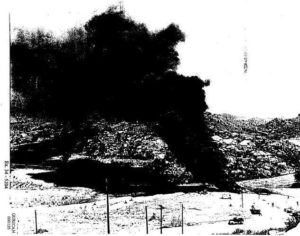
The Area IV employees who set the sodium burn pit alight with gun shots were not stupid people. They located the pit next to the lab’s border with the camp as far removed from the main area of Area IV as possible. They naturally waited for the winds to carry the poisonous smoke offsite before setting a blaze.
An EnviroReporter.com-acquired photograph showing a FSDF burn with Brandeis-Bardin in the background shows this. The fire truck in the foreground provides scale, revealing that the radioactive plume is hundreds of feet high. No visible or invisible wall exists in the archival image suggesting that the toxic smoke was somehow stopped at the border with Brandeis-Bardin.
Toxic smoke settling over SSFL’s neighbors didn’t just come from the FSDF. Thousands of rocket engine tests took place at SSFL over the decades releasing tons of chemically-contaminated smoke, gases and dust. One such ignition at the Coca test stand complex, pictured above, produced huge amounts of toxic smoke belching into the night sky. Coca lies less than a mile from Brandeis-Bardin.
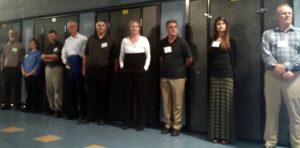
The Santa Susana Field Laboratory is known as SSFL, Rocketdyne or The Hill to former workers, longtime residents and cleanup activists who have fought to remediate the 2,850-acre outdoor lab since the 1980s. Around 30,000 rocket tests spewed toxins over the area along with three partial experimental nuclear reactors melting down in so-called nuclear Area IV of SSFL overlooking BBI. It is the site of the 1959 partial meltdown of the Sodium Reactor Experiment which spewed more radiation into the environment from its unfortified structure than the Three Mile Island partial meltdown did in Pennsylvania in 1979.
The public being in the dark about Rocketdyne is not why DTSC thinks its Brandeis-Bardin white paper will pass the smell test. Perhaps DTSC’s aggressive toxic denial has something to do with BBI owners American Jewish University. NBC4‘s I-Team came out with a blistering report May 15 called Scientists Question State Report on Camp Safety which suggested that DTSC and AJU could be in “collusion” according to one of the I-Team’s whistle blowers. The following transcript of the explosive video segment shows just how far AJU will go to claim there is not contamination from SSFL impacting Brandeis-Bardin:
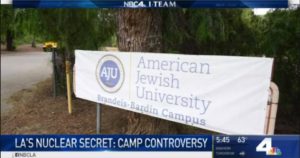
NBC4 screen shot
Strear goes on to attack the facts of the NBC4 reports, saying “we are in a highly compromised position and believe the only repair is through a definitive statement by DTSC substantiating your stated position that our property is safe.” He ends the email by saying, “Timing is most critical. We must produce something in the next 24 hours or we risk significant damage.” [Source: NBC4]
DTSC’s white paper relied in part on a 2017 AJU study of BBI and used it to collaborate its ‘there’s nothing here’ findings. EnviroReporter.com dissected this massive document and found it so revealing that we felt it was necessary to analyze every BBI report AJU has posted online ever since NBC-4’s I-Team began boring down on the camp’s contamination in 2015. The result our 1991-2017 Brandeis-Bardin Reports Analysis.
Almost all of these report summations over the 26 year period are just that, summations, except for the 2017 report which totals 1,372 pages for just eight soil and six water samples. That’s one soil test for every 360 acres and one water test for every 959 acres yet DTSC refers to it as definitive in its white paper.
The 2017 environmental assessment document, as most of the others over the decades, is authored by longtime BBI environmental consultant Joel I. Cehn. Amazingly, Cehn copped to Rocketdyne’s impact on Brandeis-Bardin by noting that the radioisotope tritium was “elevated, due to past releases from SSFL” in the latest report dated March 27, 2017. Fully 20 percent of the scant number of water samples nevertheless tested positive for tritium.
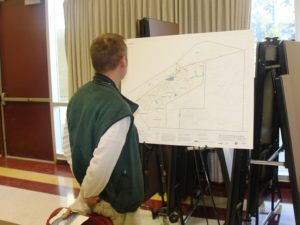
Either AJU hadn’t read Cehn’s report of two days prior or read it and didn’t understand it. And there’s the possibility AJU read the report and understood perfectly well what it said and decided to issue the “Fact Sheet” regardless.
The AJU handout doesn’t jibe with its own 2017 report which documented dioxin sampled at BBI by Cehn that EnviroReporter.com calculated to be a whopping 32 times its BTV. That is if the numbers are to be trusted. Even without a table contents or index, evidence of mishandling of the dioxin samples was noted in the lumbering document. The decision to use the laboratory results went forward with Cehn’s approval.
Not only did AJU know of the tritium, H-3, on its Brandeis-Bardin property, the report summations show that BBI knew that the ongoing release from SSFL of this radioactive “heavy water” was happening since 1995. And it appears to have been spreading. The 2013 summation Cehn prepared for AJU noted “elevated tritium in one of the new wells in the south-central region.”
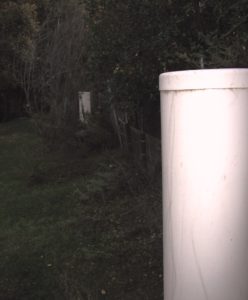
DTSC’s white papering over of Brandeis-Bardin’s toxic troubles does nothing to help clean up the camp. Instead, it perpetuates the toxic denial that has surrounded SSFL for years with claims that contamination somehow magically stays within the lab’s chain link fences.
Future visitors to Brandeis-Bardin can now weigh the facts for themselves. The numbers do not lie even though people charged with keeping the public safe from radiation and rocket fuel residue do.
And the dangers do not end here. DTSC will soon issue a draft environmental impact report for SSFL itself and if the Brandeis-Bardin white paper is any indication, the department will use its super-sized word salad of bad science to sucker the community into accepting a gutted cleanup of one of the most polluted places in California.
READ THE ENVIROREPORTER.COM ANALYSES:
27 Years of Award-Winning SSFL/Rocketdyne Reporting
1998 – 2025
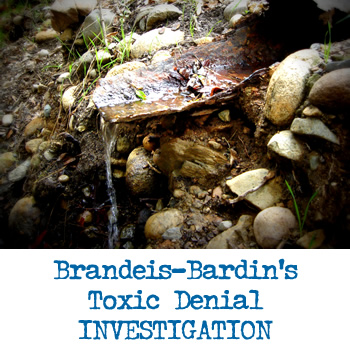












Thank you Michael Collins for this well researched critique of DTSC’s report on contamination at Brandeis-Barden Jewish Children’s Camp. What can I say, other than I am not surprised that your access to the presser was initially blocked, and that none of the questions you posed were answered. Those behaviors would be entirely consistent with previous efforts by DTSC to report dubious conclusions that were not supported by empirical data of past surveys of contamination at SSFL.
At the very heart of this issue lies a more important question. Whose interests, exactly, do State Agencies such as DTSC serve? Is it the companies who own or lease the land at SSFL and Brandeis-Barden? Is it members of the general public who may be near or enter the contaminated areas of those properties? Is it the future generations who will know even less about the history of contamination at these sites when they are converted to park land or real estate development? And what of the public confidence in government after the public realizes that so much damaging information has been swept under the rug by cherry picking results, promoting false conclusions, and generally white washing the truth.
Many will be unable to believe they have lost their health, lost their friends, or their family to the hazardous materials still leaching from SSFL to nearby properties. In the end, the loss of people’s trust in government can be the mortal blow to government itself. Recall that government exists by the informed consent of the governed. Inform us, Michael Collins. Pay attention, everyone else.
Amazing that the State toxics department works SO HARD to deny there’s a problem in Brandeis-Bardin. They test the fewest possible wells — and then excuse dioxins at 32 times acceptable levels, and overall radiation levels of 1,111 TIMES the EPA levels.
It’s mind-boggling and depressing. It’s mind-boggling that anyone thinks Brandeis-Bardin could be remotely safe — a site downstream of 30,000 rocket tests and a meltdown. It’s depressing that the DTSC might get away with this whitewash.
I’m sure glad my kid doesn’t go to this camp — I’d like him to outlive me.